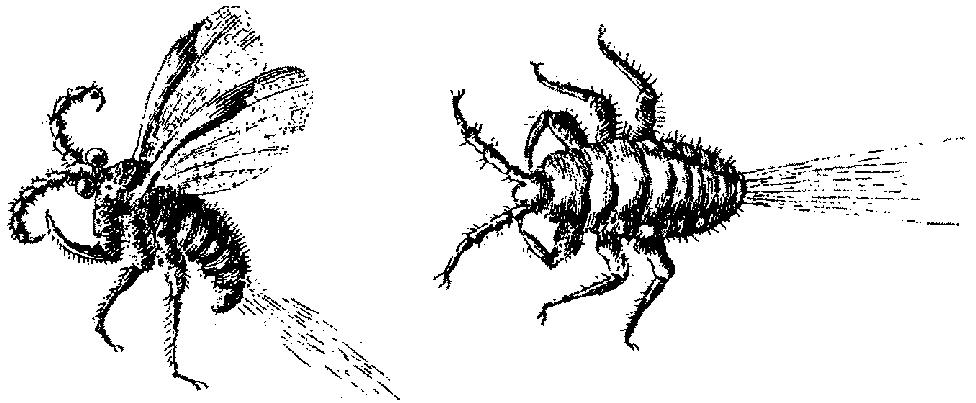Tag: Theca
-
Egg Case (mermaid’s Purse)
An egg case or egg capsule, often colloquially called a mermaid’s purse, is the casing that surrounds the eggs of oviparous chondrichthyans. Living chondricthyans that produce egg cases include some sharks, skates and chimaeras. Egg cases typically contain one embryo, except for big skate and mottled skate egg cases, which contain up to 7 embryos.[1] Oviparity is completely absent in the superorder Squalomorphii.[2][3] Egg cases are also thought to have been produced by some extinct…
-
Ascus (Mythology)
Ascus (Ancient Greek: Ἄσκος) was a giant from ancient Greek mythology, who in conjunction with Lycurgus of Thrace chained the god Dionysus and threw him into a river. The god Hermes (or, according to other tellings, Zeus) rescued Dionysus, conquered (ἐδαμασεν) the giant, flayed him, and made a bag (ἄσκος) of his skin.[1][2] A folk etymology once said that the town of Damascus in Syria derived its name from this event,…
-
Ascus (bethesda System)
The Bethesda system (TBS), officially called The Bethesda System for Reporting Cervical Cytology, is a system for reporting cervical or vaginal cytologic diagnoses,[1] used for reporting Pap smear results. It was introduced in 1988[2] and revised in 1991,[3] 2001,[1][4][5] and 2014.[6] The name comes from the location (Bethesda, Maryland) of the conference, sponsored by the National Institutes of Health, that established the system. Since 2010, there is also a…
-

ASCUS (Formerly Theca)
This article is about the spore-bearing cell in fungi. For Atypical Squamous Cells of Undetermined Significance (ASCUS), see Bethesda system. For the Greek mythological giant, see Ascus (mythology). (pl. asci) a cell present in the fruiting body of ASCOMYCETE fungi in which the fusion of HAPLOID nuclei occurs during sexual reproduction. This is normally followed by MEIOSIS, giving rise to four haploid cells, after which MITOSIS produces eight ASCOSPORES. The precise arrangement of ascospores within the ascus enables the events at meiosis to be fully analysed (see TETRAD ANALYSIS). The asci are usually enclosed within an aggregation of hyphae termed an ASCOCARP, a number of different types being recognized, e.g. perithecium, cleistothecium, apothecium. (Collins Dictionary of Biology, 3rd ed. © W. G. Hale, V. A. Saunders, J. P. Margham 2005) An ascus (from Ancient Greek ἀσκός (askós) ‘skin bag, wineskin’; pl.: asci)[1] is the sexual spore-bearing cell produced in ascomycete fungi. Each ascus usually contains eight ascospores (or octad), produced by meiosis followed, in most species, by a mitotic cell division. However, asci in some genera…
-

Thecal Sac or Dural Sac
The thecal sac or dural sac is the membranous sheath (theca) or tube of dura mater that surrounds the spinal cord and the cauda equina. The thecal sac contains the cerebrospinal fluid which provides nutrients and buoyancy to the spinal cord.[1] From the skull the tube adheres to bone at the foramen magnum and extends down to the second sacral vertebra where it tapers to cover over the filum terminale. Along most of the spinal canal it is separated…
-
Theca folliculi
The theca folliculi comprise a layer of the ovarian follicles. They appear as the follicles become secondary follicles. The theca are divided into two layers, the theca interna and the theca externa.[1] Theca cells are a group of endocrine cells in the ovary made up of connective tissue surrounding the follicle. They have many diverse functions, including promoting folliculogenesis and recruitment of a single…
-

Xylotheque
A xylotheque or xylothek (from the Greek xylon for “wood” and theque meaning “repository”) is special form of herbarium that consists of a collection of authenticated wood specimens.[1] It is also known as a xylarium (from the Greek xylon for “wood” and Latin arium meaning “separate place”). Traditionally, xylotheque specimens were in the form of book-shaped volumes, each made of a particular kind of wood and holding samples of the different parts…
-
Steroidogenic factor 1 (SF-1) protein and a few related things
The steroidogenic factor 1 (SF-1) protein is a transcription factor involved in sex determination by controlling the activity of genes related to the reproductive glands or gonads and adrenal glands. This protein is encoded by the NR5A1 gene, a member of the nuclear receptor subfamily, located on the long arm of chromosome 9 at position 33.3. It was originally identified as a regulator of genes encoding cytochrome P450 steroid hydroxylases, however, further roles…
-
It Ain’t Easy Being Green
Is this why they have gone off the rails with the beta carotene and related things? Thoughts for another day. A search for “green plasma” at pubmed turns up 130 articles from 1965 to present. A search for green plasma (without the marks) or ‘green plasma’ at the same place turns up 1280 articles from…
-

Polish Cochineal (Porphyrophora polonica)
Polish cochineal (Porphyrophora polonica), also known as Polish carmine scales, is a scale insect formerly used to produce a crimson dye of the same name, colloquially known as “Saint John’s blood”. The larvae of P. polonica are sessile parasites living on the roots of various herbs—especially those of the perennial knawel—growing on the sandy soils of Central Europe and other parts of Eurasia. Before the development of aniline, alizarin, and other synthetic dyes, the insect was…
Recent Posts
- 🧬 Disease Table with Low Sodium Connection
- 🧂 Sodium Reduction and Sodium Replacement: A History of Reformulation and Exploding Diseases, Including Many Diseases Unheard of Before Deadly Sodium Policies
- 🧂 The DEADLY 1500 mg Sodium Recommendation predates the WHO’s formal global sodium reduction push by nearly a decade (and it’s even worse than that)
- 🧬 What Is Beta-Glucuronidase?
- When Sugar Was Salt: Crystalline Confusion and the Covenant of Sweetness
Tags
ADAM ASPARTAME Birds Blood Bones Brain Bugs Cancer Columba Cows crystallography Death Death cults Eggs Etymology Gastrin Gold Growth hormone History Hormones Insulin Liver Mere Perplexity Metal Monkey Business Mythology Paracetamol Plants Poison Pregnancy Protein Religion Reproduction Rocks Salt Slavery Snakes Sodium the birds and the bees Thiocyanate Tobacco Tylenol Underworld Venom zinc
